Video Analytics for Manufacturing: Unlocking the Power of Data in 2023
Learn how manufacturers use video analytics to transform your marketing campaigns and achieve maximum results. Discover the best tools and strategies for success.

According to HubSpot, over 80% of marketers say that video has increased traffic to their website, and an additional 83% of marketers say that video has helped them generate leads. Assuming that this data correlates to the industry, we need to understand the power of video analytics for manufacturers in our marketing strategies.
In the world of digital marketing for manufacturing, video is an increasingly essential component. Video analytics allows manufacturers to make data-driven decisions about their marketing, helping them effectively leverage their video content in a variety of ways that we will cover in this article.
Unfortunately, many companies don’t take full advantage of the insights offered by video analytics, even after investing heavily in video production.
This article aims to shed light on the importance of video analytics for manufacturing companies and how it can improve their overall marketing strategy.
In this article we will cover:
- Why Video Analytics is Crucial for Manufacturing Companies
- The Top Video Analytics Tools for Manufacturers
- Popular uses of Video Marketing in the Industrial Industry
- Best Practices for Implementing Video Analytics
- How Farotech uses Video Analytics to help our client achieve success
- Taking the first step
Why Video Analytics is Crucial for Manufacturing Companies
In the past decade, according to Hubspot’s latest “State of Video Marketing” report:
“More marketers credited video with increasing dwell time, traffic, leads, sales, and reduced support queries than in ANY of our annual surveys since 2015, – while an all-time high number of marketers (92%) told us they get a good ROI on video content, up from 87% in 2022.”
Based on the above study and so many others, it seems like “everyone” is using video in their marketing, but not everyone is using it properly. This is partially because so many don’t know the power of video analytics.
Video analytics can enhance the overall marketing strategy by providing insights into viewer behavior, helping manufacturers identify successful campaigns, and optimizing their video content.
For example, companies such as Boeing and Siemens have used video analytics to track user engagement, leading to improved lead generation and conversion rates. Videos can humanize your company, tell captivating stories about your brand, and highlight the power of your products and services.
The Top Tools to Measure Video Analytics for Manufacturers
There are numerous video analytics tools available, but we recommend the following for manufacturers:
- YouTube Video Analytics – Offers comprehensive analytics, keyword research, and optimization features.
- Wistia for Manufacturers – Provides advanced video analytics, heatmaps, and viewer engagement data.
- Vidyard for Manufacturers – Offers detailed video analytics, individual viewer tracking, and integration with marketing automation platforms.
Each tool has its unique features and benefits, so choose the one that best aligns with your needs and goals. As you can see, this stuff is simple but it is not easy. If you want help, we got you! Click here to get some complimentary one-on-one video consulting.
Youtube Analytics vs. Specialized Video Analytics
In this part, we will focus on comparing YouTube with specialized video analytics platforms, Wistia and Vidyard, without delving into YouTube analytics. A separate article will cover YouTube analytics in detail. Here, Wistia and Vidyard are grouped together as specialized analytics providers, offering advanced features beyond those found on YouTube.
| Feature | Specialized Video Analytics | YouTube |
| Customization & Branding | More control over player appearance (colors, controls, end screens) | Limited customization, displays own branding |
| Video Analytics | In-depth analytics (engagement graphs, viewer history, heat maps) | Limited analytics (view counts, watch time, audience demographics) |
| Ad-Free Experience | Ad-free videos | Displays ads on videos |
| SEO & Traffic | Drives traffic to website through video SEO | Drives traffic through search results and suggested videos |
| Lead Generation & Integration | Built-in lead gen tools integrates with marketing automation | More suitable for brand awareness, lacks built-in lead gen features |
In summary, Specialized Analytics is commonly better suited for businesses that require more customization, in-depth analytics, and lead-generation tools, while YouTube is ideal for businesses looking to reach a broader audience and leverage the platform’s massive user base. The choice between the two depends on your specific marketing goals and priorities.
Youtube Analytics Differentiators
YouTube Analytics provides certain features that are unique to the platform due to its massive user base and integration with the Google ecosystem. Some features that may not be available in Wistia and Vidyard include:
Traffic Sources: YouTube Analytics offers insights into traffic sources for your videos, such as external websites, YouTube searches, suggested videos, and more. This can help you understand where your audience is coming from and how they discover your content.
Demographics: YouTube provides detailed demographic information about your audience, including age, gender, and geographic location. This data can help you better understand and target your audience.
Playback Locations: YouTube Analytics can show where your videos are being viewed, whether it’s on YouTube itself, embedded on other websites, or within YouTube’s mobile app.
Devices and Operating Systems: YouTube provides data on the devices and operating systems your audience uses to watch your videos, giving you insights into the user experience and helping you optimize your content for different platforms.
YouTube-specific Metrics: YouTube Analytics offers platform-specific metrics, such as likes, dislikes, comments, shares, and subscriber counts, which can help you understand how your content is performing and engaging with the YouTube community.
While Wistia and Vidyard may offer some similar data points, their focus is more on in-depth video analytics and lead-generation tools tailored to businesses. The unique features of YouTube Analytics are mainly derived from YouTube’s status as the world’s second-largest search engine and its massive, diverse user base.
Comparing Wistia vs. Vidyard
Now, let’s briefly compare the specialized analytics software provided by Wistia and Vidyard
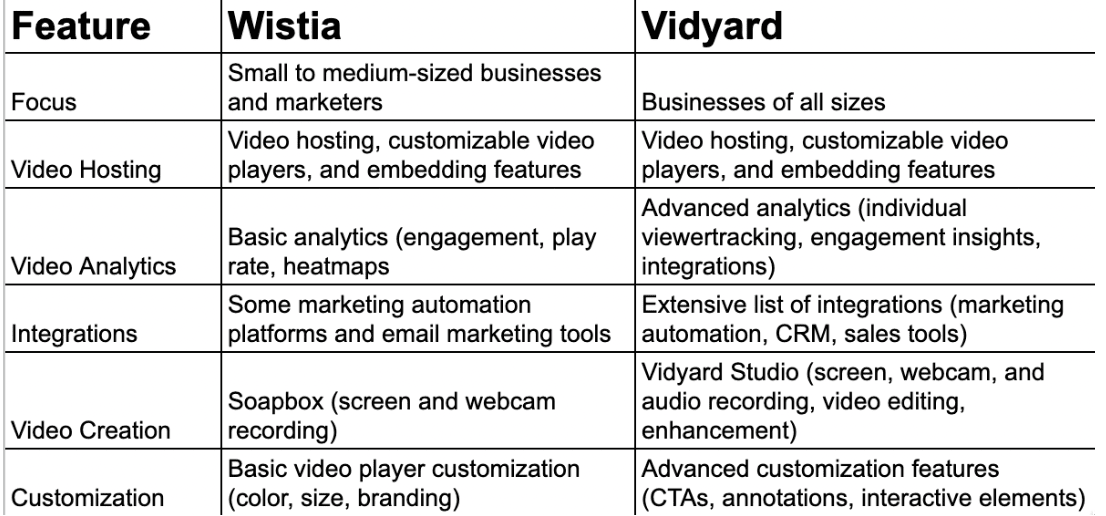
Here is a chart, comparing Wistia with Vidyard:
While we believe that Wistia has a slight upper hand over Vidyard, there are some features that Vidyard possesses that truly set it apart. We have outlined these differentiators in the following graphic, courtesy of Capterra.

In summary, here are some highlights of where Wistia stands out from the others:
Wistia excels in providing a user-friendly and intuitive platform that is especially well-suited for small to medium-sized businesses and marketers. While both Wistia and Vidyard offer video hosting and customization options, Wistia stands out for its simplicity and ease of use, making it an attractive option for users who might not require the advanced features that Vidyard offers.
Additionally, Wistia’s Soapbox tool allows for quick and simple screen and webcam recording, which can be helpful for users who are new to video creation.
Using Video in Manufacturing Marketing
In the manufacturing industry, leveraging video content and pairing it with video analytics for manufacturers has become an increasingly effective way to communicate and engage with customers, partners, and employees.
Here are some key use cases of videos in manufacturing that can help drive better understanding, showcase capabilities, and build brand trust:
Use Cases of Videos in Manufacturing
- Showcasing product features and capabilities
- Demonstrating complex manufacturing processes
- Offering virtual facility tours
- Providing customer testimonials and case studies
- Delivering instructional and educational content
Best Practices for Implementing Video Analytics
- Set clear goals and KPIs for your video analytics campaigns.
- Choose the right video analytics tool that aligns with your needs.
- Optimize your video content for search engines and sharing on social media platforms.
- Monitor and analyze video performance regularly to identify trends and areas for improvement.
- Test different video formats, lengths, and styles to determine what resonates best with your audience.
- Incorporate video analytics insights into your overall marketing strategy for continuous improvement.
Example of how Video Analytics can be used in the Manufacturing Industry:
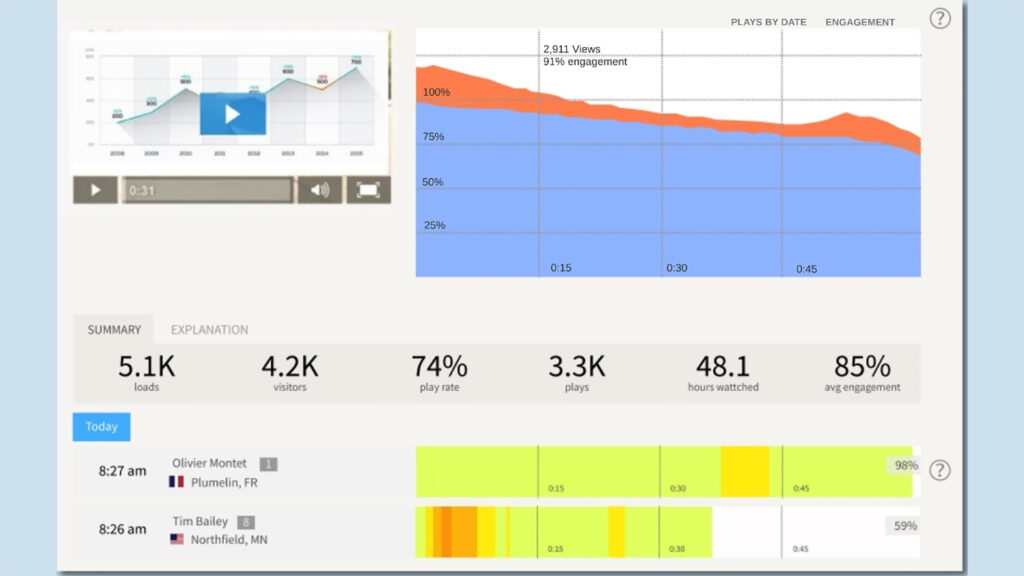
Let’s say you’re a manufacturing company that has invested significantly in a product page video.
Typically, with YouTube, you can only access basic metrics such as views, duration, and click-through rates. However, understanding how individuals are engaging with your video, where they drop off, and their engagement levels for each part of the video is much more difficult to understand in Google Analytics.
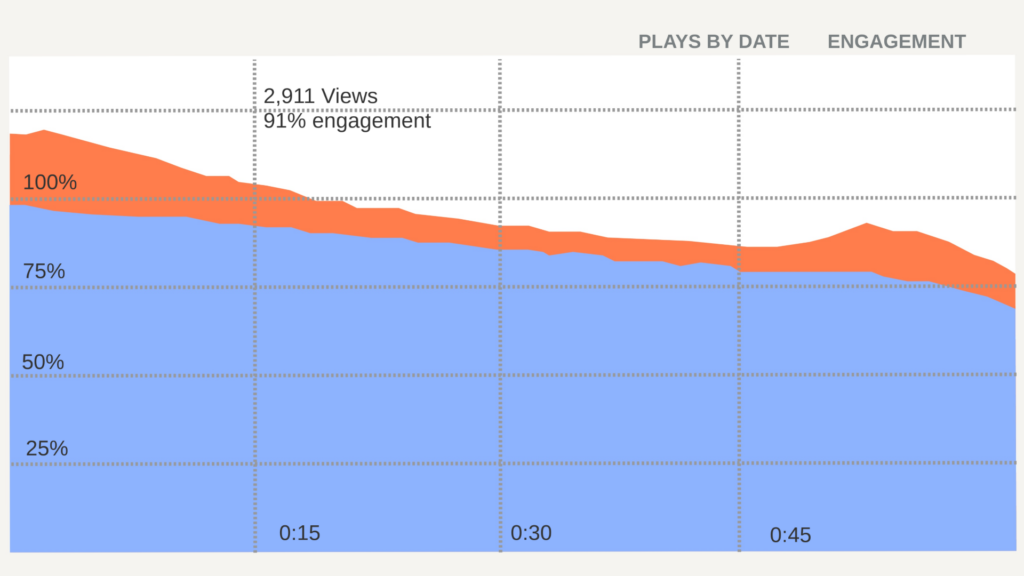
With Advanced Video Analytics like Wistia, you have a dashboard where you can track exactly how people are engaging with the video and where drop-offs are occurring. This information can help you edit your master video for maximum effectiveness or guide you in creating more effective videos in the future.
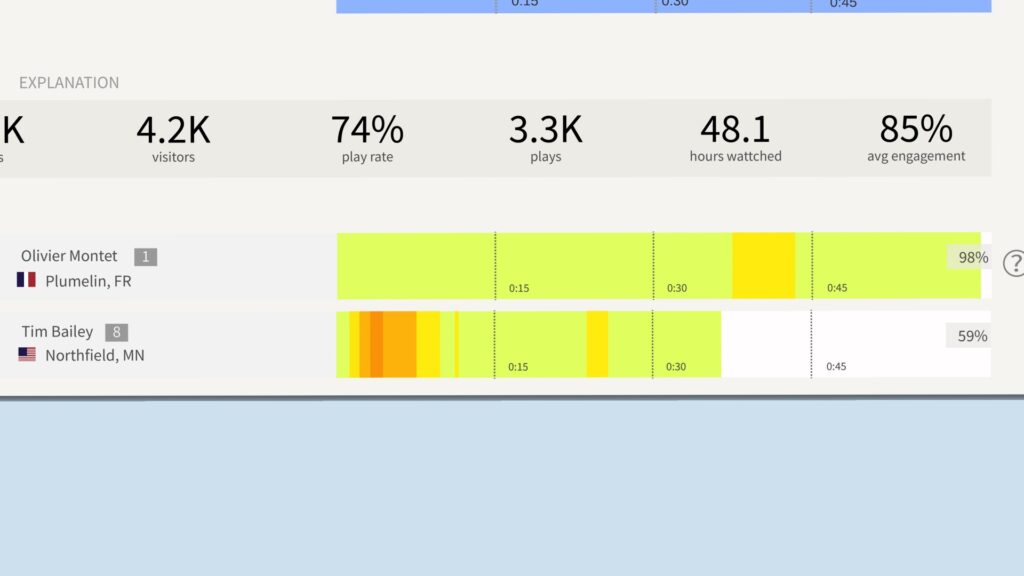
With traditional platforms like YouTube, you can only access general information about how people are engaging, and you cannot drill down to the actual individuals who are watching your videos.
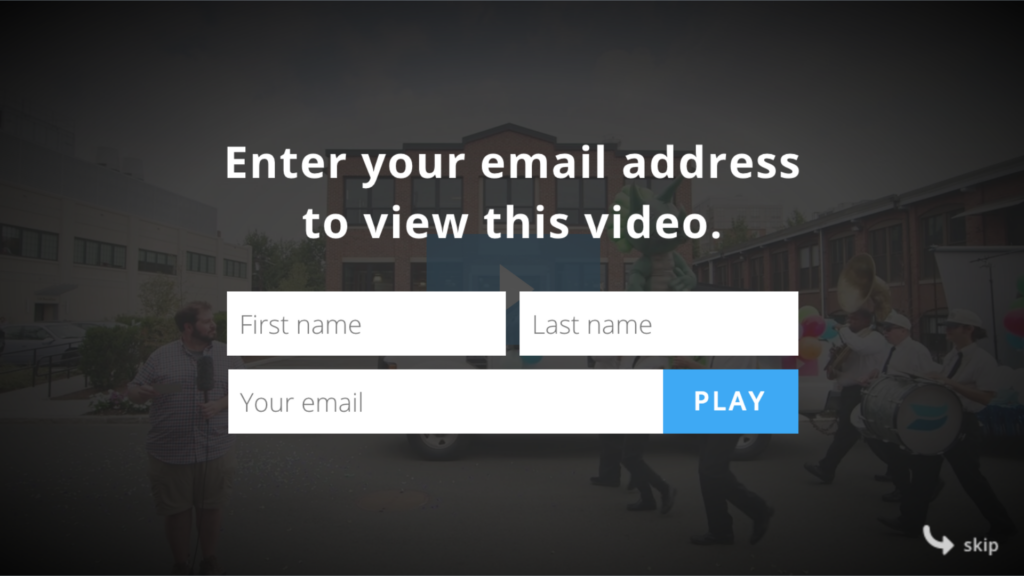
However, with advanced analytics, we are able to put a call to action directly on the video, and we can see the two individuals who engaged with the video.
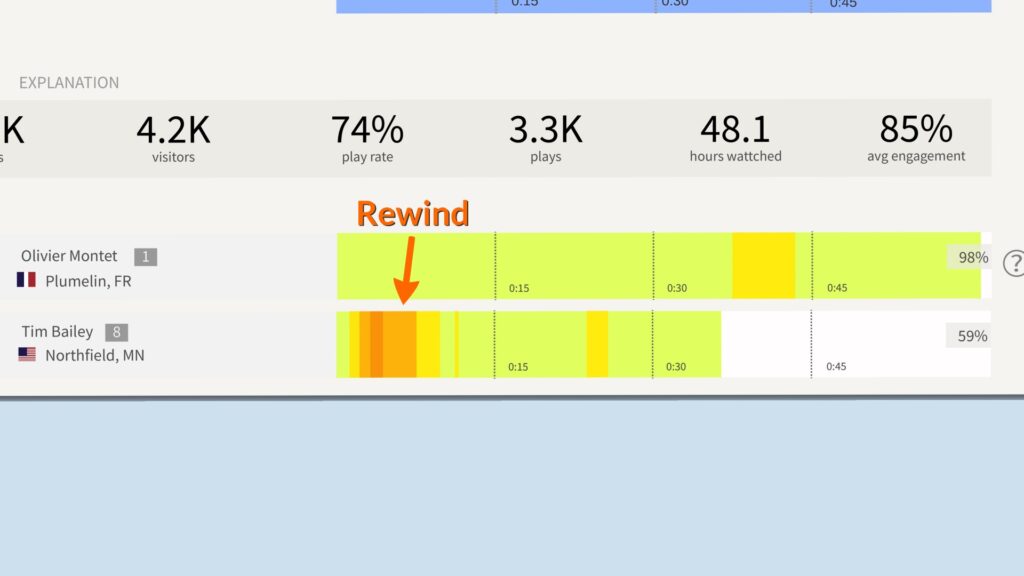
Lets assume that in this example we have 2 individuals who have provided their contact information through the video call to action (CTA) The first individual, Oliver Montet, watched 98% of the video, while the second individual, Tim Bailey from the United States, did not watch the entire video but did rewind several parts of it.
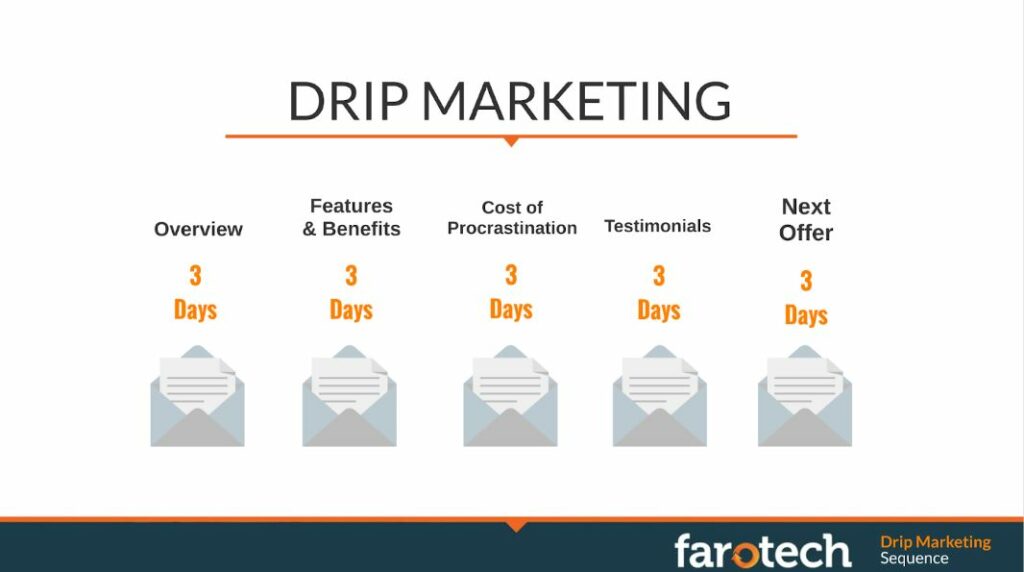
Our video analytics platform can be connected to a marketing automation platform like HubSpot, allowing us to effectively drip market to these individuals about the parts of the video that Tim may have missed. (See Above)
In summary, our video analytics platform provides detailed insights into how individuals are engaging with your video, allowing you to identify areas for improvement and effectively market to those who did not watch the entire video.
We walk through our video analytics process in great detail in our Digital Marketing Process Guide.
Conclusion
Video analytics is a powerful tool for manufacturers looking to improve their marketing strategy.
Whether you are using Wistia or Vidyard, by investing in video analytics for manufacturers, you can gain valuable insights into viewer behavior, optimize their video content, and enhance their overall marketing performance.
As marketing in the manufacturing industry continues to evolve, the importance of video analytics will only grow.
Taking the First Step:
While video analytics may seem simple, it’s not necessarily easy. In fact, it’s easy to waste time and resources going down the wrong path. That’s why it’s highly recommended to implement a video analytics strategy with a digital marketing partner.
If you’re interested in learning more about how we’ve helped our manufacturing clients with this, please schedule a time to speak with one of our partner growth specialists.
